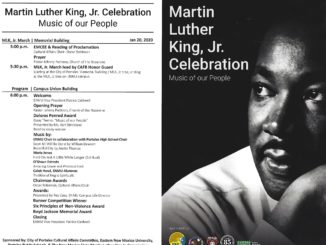By Julian Gagnon
Technological innovations were a primary cause and driver of changes in the media industry. From the advent of the internet to smart phones with 5g speed, the possibilities for journalists are seemingly endless and always in motion. Citizen journalists that create their own media content are increasingly popular source of information in our current media landscape. However, those citizen journalists regularly create multimedia content and their own marketing campaigns. As a result, the traditional borders between marketing and journalism are breaking down. Citizen journalists that integrate marketing into their multimedia content present a potential perspective on the future of journalism.
In their model of the blogosphere, Khan et. al. (2017) noted that the development of the web and social networks, in particular blogs, were some of the main enablers of multimedia journalism. The same could be said in the field of marketing. “Technology has changed the way corporations market their products and services” (Blakeman, 2024). These technological improvements allowed both journalists and marketers to produce new types of content in new networks of communication. Video content is easier than ever to produce. Social media platforms make it easier to reach target audiences. Artificial intelligence is already impacting both journalism and marketing, and it not even close to its maximum capabilities. Future technology will undoubtedly impact citizen journalists and integrated marketing in unforeseen ways.
In a 2009 study of the state of news in the U.S., the Pew Research Center observed that citizen news sites had more forms of social interaction and the ability for citizens to upload multimedia content than legacy news sites in many different metrics: forums, information about community activities, news/feature stories, audio, photographs, and video. The Pew Research Center study demonstrated that citizen news sites were more interactive in their integrated marketing and allowed users to submit more multimedia content for stories in their community than mainstream media. Citizen journalists have more opportunities to market their content then ever before, largely due to the technological changes previously explained. Furthermore, Gupta (2019) argued that mobile phones are a critical technology in the rise of citizen journalism because of the multimedia content they provide creators. With a seemingly infinite number of social media platforms to post their stories, and a smart phone with capabilities to produce multiple formats of media content, the rise of citizen journalism should have been a predictable consequence of technological innovation.
Yet, the blurring of lines between citizen journalism and integrated communication creates new challenges as well. One concern is the lack of differentiation between news and marketing content. Legal and ethical guidelines should extend to citizen journalism and the increasingly popular trend of influencer marketing. Sadly, content creators rarely identify posts as marketing, sales, or paid promotions, resulting in a wave of lawsuits (Reynolds Porter Chamberlain LLP, 2021). The enhancement of AI capabilities will introduce new ethical and legal questions on intellectual property and lower the barrier to production of misinformation or disinformation. It’s more important now than even for citizen journalist to think through the ethical and legal implications of their multimedia content and integrated marketing campaigns.
Technological changes drove both the advancement of citizen journalism and integrated marketing. They created new opportunities for both industries to reach their target audiences. Website, blogs, and social media networks provided content creators and marketers with new platforms to reach consumers. Smart phones made production of multimedia content ubiquitous. Simultaneously creating new opportunities for citizen journalists and marketing campaigns, the blurring of lines between the two fields of marketing and journalism created new shades of grey. The lack of distinction between marketing and news, as well as the failure to identify content as marketing, sales, or paid promotion materials raised seriously ethical and legal considerations. Students of communication would be wise to capitalize on the collapse of boundaries between journalism and marketing in the most ethical, and legal, ways possible.
Blakeman, R. (2024). Integrated marketing communication: Creative strategy from idea to implementation (4th Ed). The Rowman & Littlefield Publishing Group, Inc.
Gupta, K. (2019). Participatory practices by citizens in media. Pramana Research Journal, 9(12), 39-47. https://www.pramanaresearch.org/gallery/prj-p1354.pdf
Khan, H.U., Daud, A., Ishfaq, U., Amjad, T., Aljohani, A.N., Abbasi, R.A., & Alowibdi, J.S. (2017). Modelling to identify influential bloggers in the blogosphere: A survey. Computers in Human Behavior, 68(), 64-82. https://doi.org/10.1016/j.chb.2016.11.012.
Pew Research Center. (2009). The state of the news media. https://assets.pewresearch.org/files/journalism/State-of-the-News-Media-Report-2009-FINAL.pdf
Reynolds Porter Chamberlain LLP. (2021, January 15). Influencer and brand under fire for failing to clearly identify marketing communication on TikTok (Jamella t/a GHD in association with Emily Canham). https://www.rpclegal.com/snapshots/advertising-and-marketing/influencer-and-brand-under-fire-for-failing-to-clearly-identify-marketing-communication-on-tiktok/



